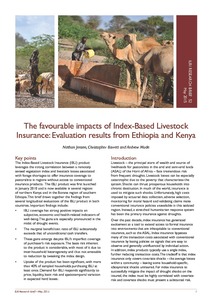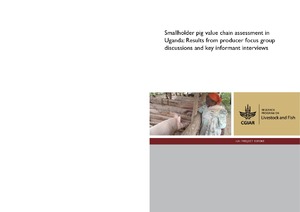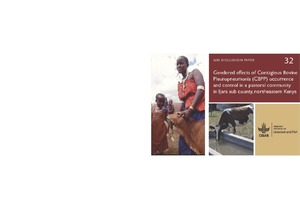Location
Vision, mission and strategy
ILRI's strategy 2013-2022 was approved in December 2012. It emerged from a wide processof consultation and engagement.
ILRI envisions... a world where all people have access to enough food and livelihood options to fulfil their potential.
ILRI’s mission is... to improve food and nutritional security and to reduce poverty in developing countries through research for efficient, safe and sustainable use of livestock—ensuring better lives through livestock.
ILRI’s three strategic objectives are:
- with partners, to develop, test, adapt and promote science-based practices that—being sustainable and scalable—achieve better lives through livestock.
- with partners,to provide compelling scientific evidence in ways that persuade decision-makers—from farms to boardrooms and parliaments—that smarter policies and bigger livestock investments can deliver significant socio-economic, health and environmental dividends to both poor nations and households.
- with partners,to increase capacity among ILRI’s key stakeholders to make better use of livestock science and investments for better lives through livestock.
This is ILRI’s second ten-year strategy. It incorporates a number of changes, many based on learning from the previous strategy (2000–2010, initially produced in 2000 and modified in 2002), an interim strategy (2011–2012) and an assessment of the external and internal environments in which the institute operates.
Members:
Resources
Displaying 231 - 235 of 1152The favourable impacts of Index-Based Livestock Insurance: Evaluation results from Ethiopia and Kenya
Institutional linkages for landscape level governance: The case of Mt. Marsabit, Kenya
WASTED LIVES: A Critical Analysis of China’s Campaign to End Tibetan Pastoral Lifeways
This report is an extended analytical essay, on the perverse outcomes of statist interventions into customary land management practices over a huge area that has been managed sustainably and productively by Tibetan pastoralists for 9000 years. Building on the many reports on sedentarisation, and removal of pastoral nomads from their pastures, this report takes a wider perspective, seeking to understand how the current collapse of the pastoral mode of production came about, and what the future prospects are for the depopulating pastoral landscapes of the Tibetan Plateau.






